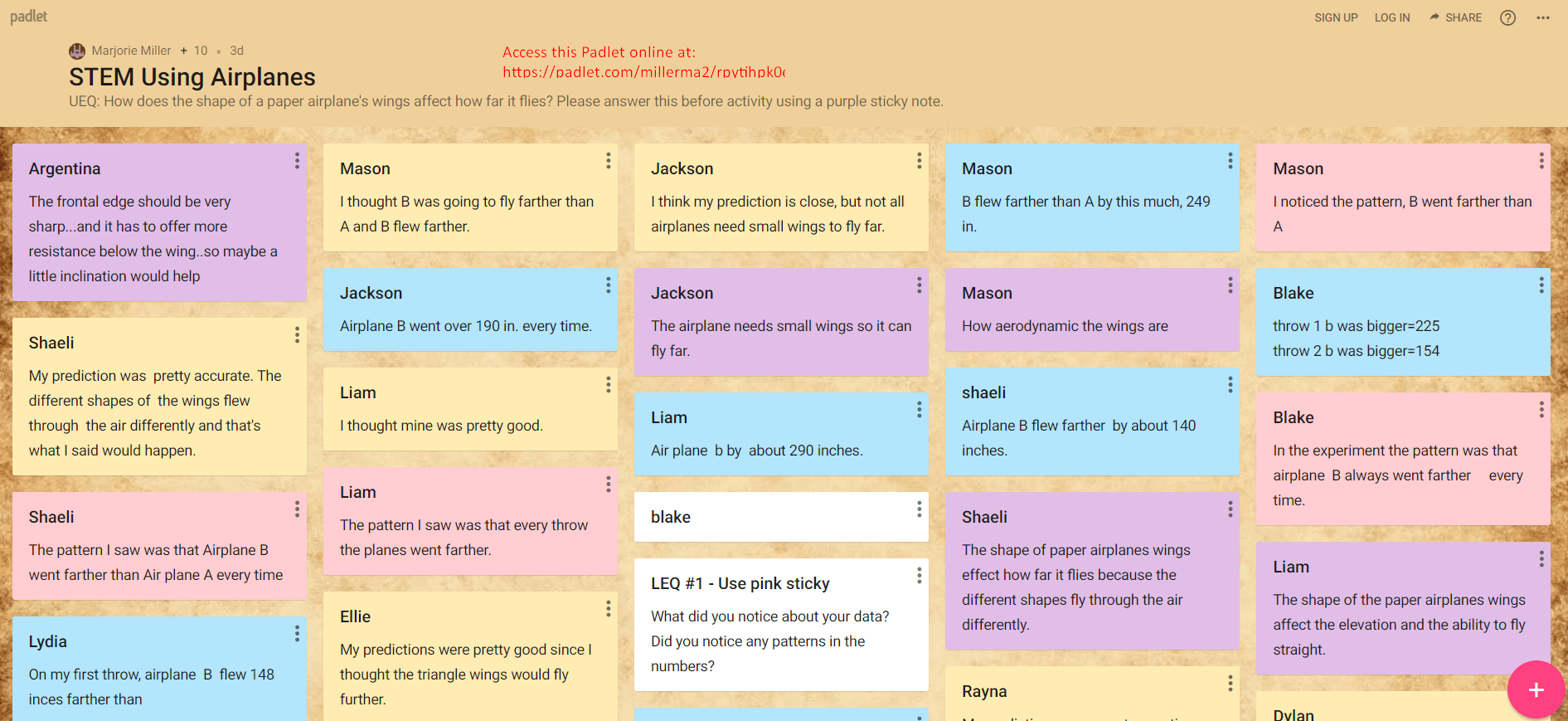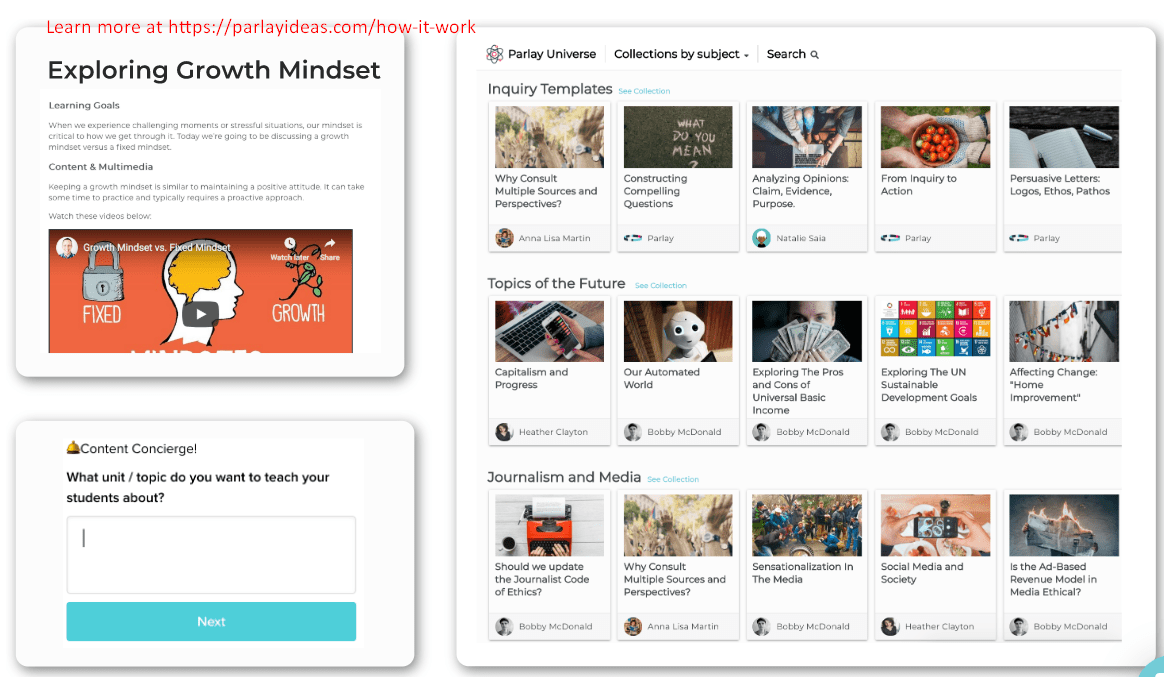A colleague recently posted the following request for help in finding an interactive way for his students to respond to literature questions via class discussions. He received some fascinating responses to his question. In this blog entry, I’ll try out some of the suggestions and share my thoughts about them.
“All teaching boils down to three key processes…The processes are: finding out where learners are in their learning, finding out where they are going, and finding out how to get there,” says Dylan Wiliam (2011, The Case for Formative Assessment, page 45).
Create Opportunities for Digital Class Discussions
Here’s a copy of the original request that a teacher shared:
Hi, would you happen to have ideas? I want to create opportunities for digital interaction around a short story. We’re reading the short story, and I want students to respond to the questions. Students need to be able to read each other’s responses and leave comments. I want to keep track of how many comments they leave so I can grade them. Thanks in advance for your ideas.
This teacher, whose request I’ve revised for length and clarity, is really looking for a virtual space. In this virtual space, students should have the option to post their responses to questions and should have the ability to comment on other students’ posts and responses.
The main challenge here is keeping the virtual space a safe place for learning conversations focused on the content. For K-12, the goal is to create a walled garden where students can interact. In this way, others (e.g. parents, community, strangers) don’t intrude on fragile chats.
Caution: In some districts, providing students with a virtual space is not allowed. Even when there is teacher supervision, in a secondary setting, there may be too many posts to review. That said, as teachers, we need to encourage civil discourse in our classrooms. Students’ failures to interact in an appropriate manner are opportunities for growth. Do you agree? Share your thoughts in the comments.
Solution #1: Learning Management System (LMS)
A learning management system with a built-in discussion board is one possible response. Many schools provide teachers access to an LMS for use in their classrooms. If not, there are many other solutions you can take advantage of that are no-cost. Whether you are using Instructure’s Canvas, Schoology, Blackboard, or Moodle, solutions abound. You can even use Microsoft Teams and set up a specific area for discussion. Google Classroom may offer some opportunities as well.
One response to this teacher stated the following. I laughed when I read it because I did something like this once. Since then, I’ve learned to push for a school/district approved response. The one thing that will raise eyebrows is the following:
Get a free moodlecloud site and create a chat forum! It will do exactly what you want.. You can even make it so they can’t comment until they’ve posted their own response. Source: Kerry Crawford via Facebook group
If you are in a situation where going rogue with an LMS not under district control is okay, then options abound. You can find Moodle hosting sites everywhere with a low monthly price. Some districts or schools host Moodle instances in-house. This is great because it makes account management pretty easy.
Here’s a video overview of discussion forums in Moodle:
If you want to try this suggestion out, get yourself a “Droplet” in Digital Ocean. If you want to grow and learn more about GNU/Linux distributions, there are many you could start with (e.g. Ubuntu Linux).
Solution #2: Flipgrid
“Flipgrid? That could be fun!” says Bethany Nopajaroonsri. Would you like to try a solution that’s not text-heavy? Consider giving Flipgrid.com a try. It’s a versatile tool, cross-platform, and works great on smartphones. You can set up your Flipgrid to capture students’ responses to questions. Consider this example of Flipgrid use for Student Book Talks.
There’s no reason why a teacher couldn’t set up a Flipgrid Topic for their short story. If you want to learn more, explore Mike Tholfsen’s Wakelet collection, #FlipgridPD: Getting Started.

One of the best aspects of this solution is that Microsoft’s sponsorship has made it completely free. And Flipgrid’s developers are conscious that their product must be K-12 friendly.
Solution #3: Padlet for Class Discussions
Need a virtual bulletin board solution? Padlet might be your answer, if you don’t mind paying almost a hundred dollars. Imagine your students posting content of all sorts, such as video, text, G Suite EDU documents, and more. Everything appears in the form of a post-it on a bulletin board. Ben Fisher describes it in this way:
Padlet is like a virtual bulletin board. Students can comment on a post you’ve made or they can make their own post on the Padlet board. It allows them to post text, images, and videos.
Padlet offers many different ways to organize content, as well as protect content. Your padlet can be as public or private as you like. As a veteran Padlet user, the only question you need ask yourself is, “Are you ready to pay $99 a year?” If so, you’re ready to get going.

Solution #4: Verso Learning
“Check out Verso. It allows you to post a video, link, text, etc. and have students respond. They can then respond to each other’s answers. They even can upvote the responses they find helpful,” says Keith Schoch. You can read about Keith’s use of Verso Learning in his blog entry “How to Teach a Novel: How to Create Interactivity, Even Remotely” where he lists ways that teachers can use Verso to:
- Build understanding of historical context of a novel
- Review a concept or skill covered in class
- Generate background information for a current events debate or writing
- Review the steps of a process
- Integrate SEL and discuss sensitive topics such as bullying
- Provide alternate interpretations of classic literature
- Practice inference skills
- Create an online crowd-sourcing site
You will want to read his blog entry for the details. Verso’s website includes references to evidence-based, high-impact strategies. They assert they have put these together around the work of luminaries such as John Hattie, Robert Marzano, and Michael Fullan.
Watch the video appearing on this page to learn more. There’s a lot to like on the Verso website, and may well be worth a separate blog entry. There is a cost associated.

Solution #5: Parlay Ideas
Parlay offers discussion prompts at a price. Teachers can get started with a no-cost account. You can see how it works via their website or watch video below:
As you might imagine, there are ways to use many of these digital tools to enhance class chats. You can stay old-fashioned with discussion forums (e.g. LMS-based forums) or go all in for video (e.g. Flipgrid). You can rely on Google Classroom, Microsoft Teams, or even G Suite EDU Slides comments. There are many choices. Remember to keep it simple and inexpensive.



7 comments
Wow! Just started this online instructing and their is a lot to take in.
I’ve used Edmodo with middle-schoolers for several years.
The typical set-up was assigning students in groups of 5-7 or so to one of the first four days of the week. Friday was reserved as a make-up day.
I’d post a prompt relating to that day’s reading for them to respond to twice in a minimum of three well-crafted/edited sentences each time.
Instructions on engagement: “Always appropriate, always thoughtful, always academic.” They could certainly disagree but needed to do it politely; no social-media “Hey, whazzup?” approach.
We’d typically give a portion of class time to reviewing the prior day’s posts, highlighting especially strong work.
Now, at home with distance learning, this has already proven a positive way for them to communicate with each other. Same basic set-up, only I’m leaving more follow-up comments at day’s end since I won’t see them in class the next day.
Great points, Patty. Building relationships and routines before going virtual has its benefits. In remote Learning situations, many wish they had taken the steps you had before they became necessary. We all must start somewhere…smooth or rough. Thanks for your insights.
Miguel
Thanks for the shout-out regarding my thoughts on Verso. This tool is actually free for individual teachers, and has proven a perfect portal for students to interact with content, and each other, remotely. It presents teachers with a great opportunity for finding really high-interests texts, videos, etc. which will get conversations going.
Keith, thanks for the clarification and for your modeling of this amazing remote learning tool.
Wishing you well,
Miguel Guhlin (@mglearn)
If you write another post like this (I recommend it!) please include PollEverywhere and Spiral (https://spiral.ac/). Both are free for teachers right now and have amazing features. Also, Testmoz is an amazing quizzing site that offers both free and paid options.
Nice Share! Your blog has always been a good source for me to get quality knowledge…Liked your blog and have bookmarked it.